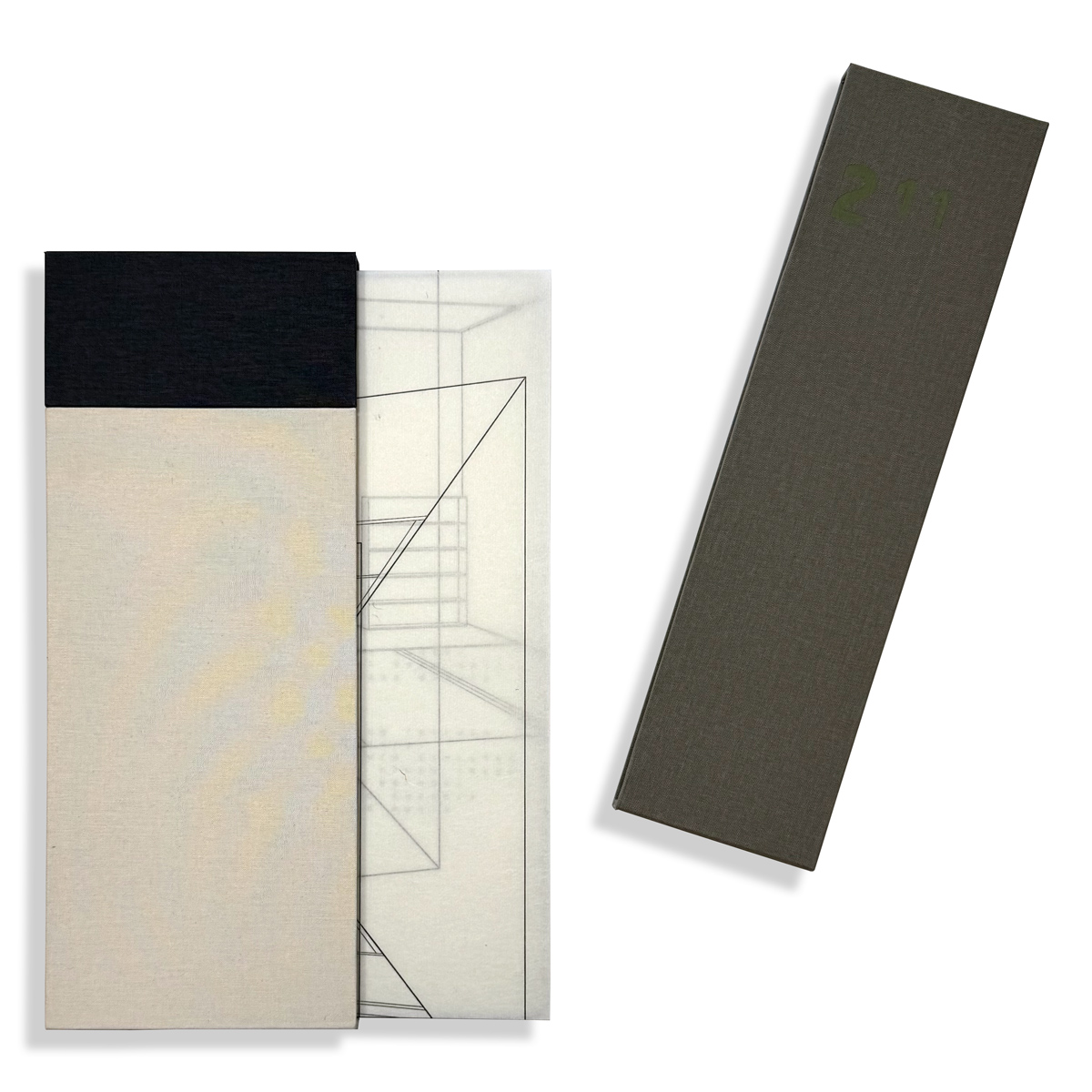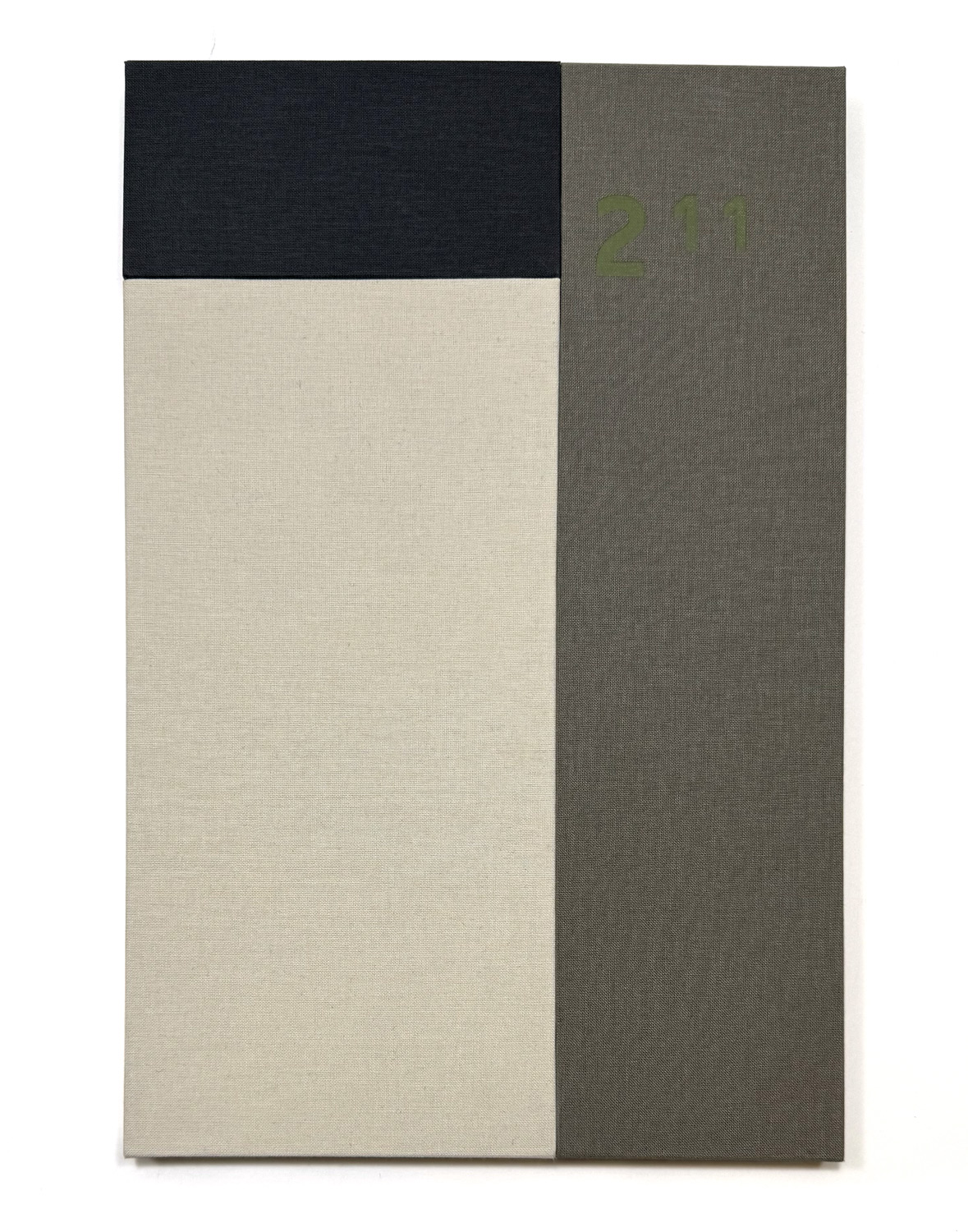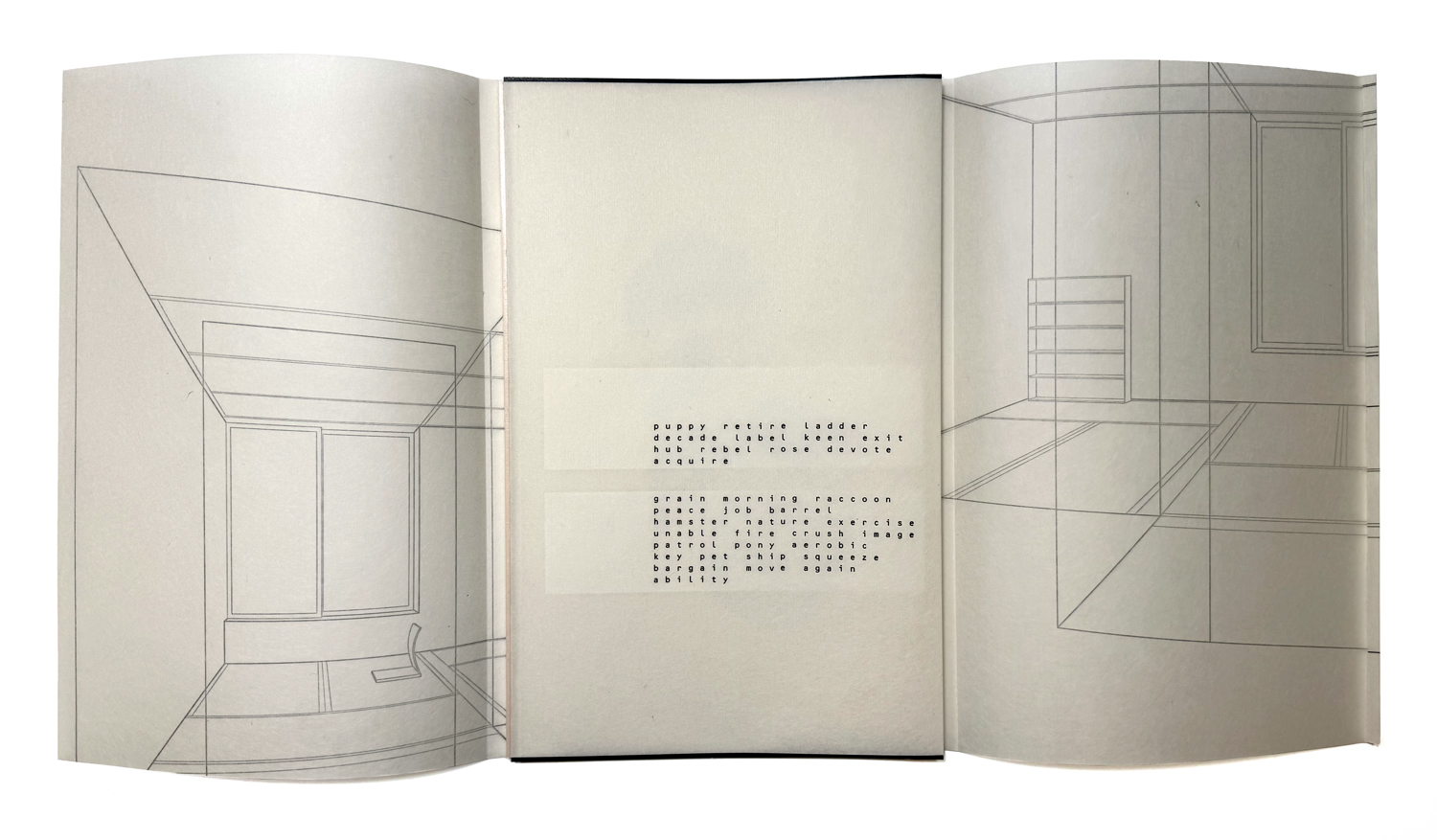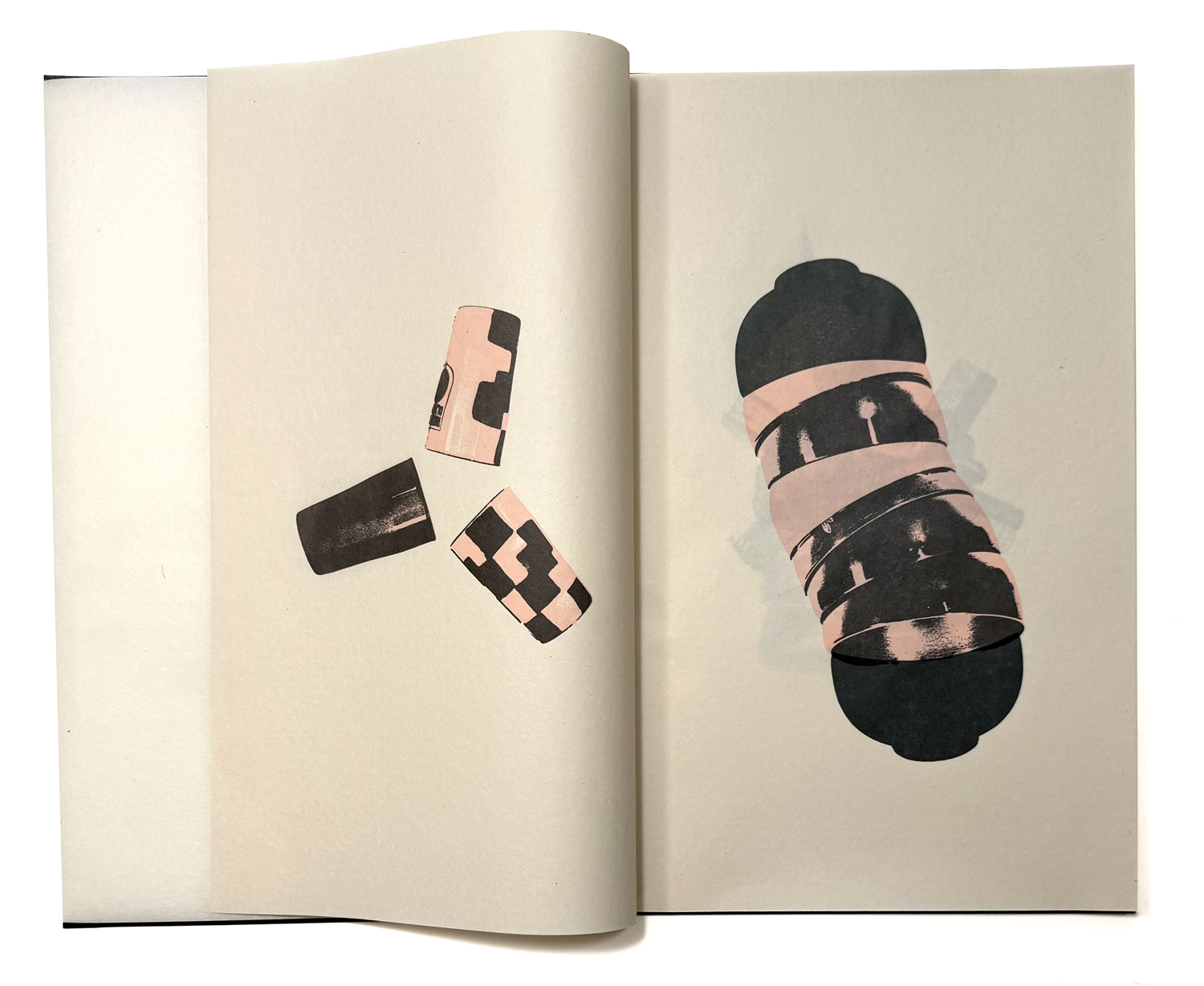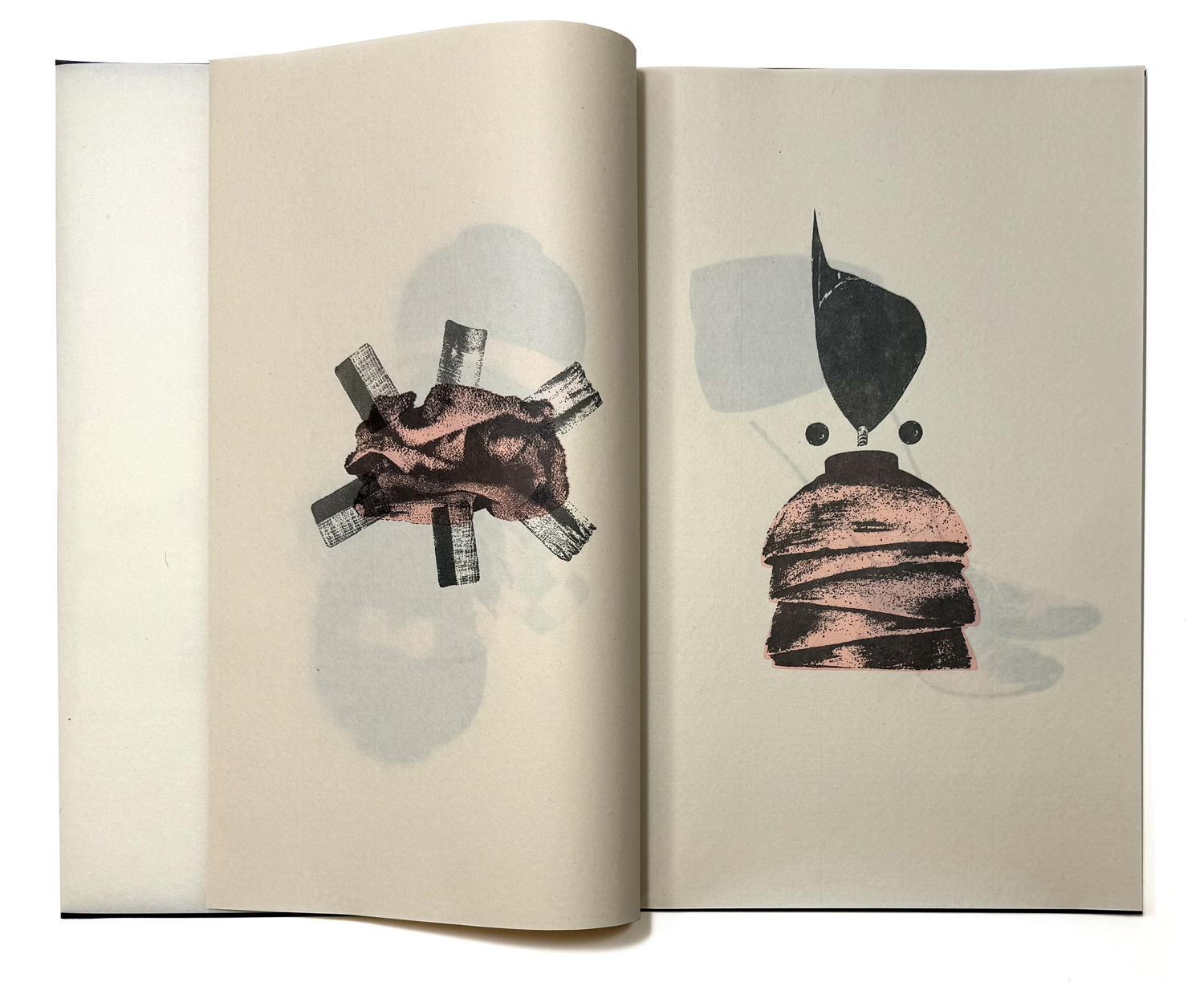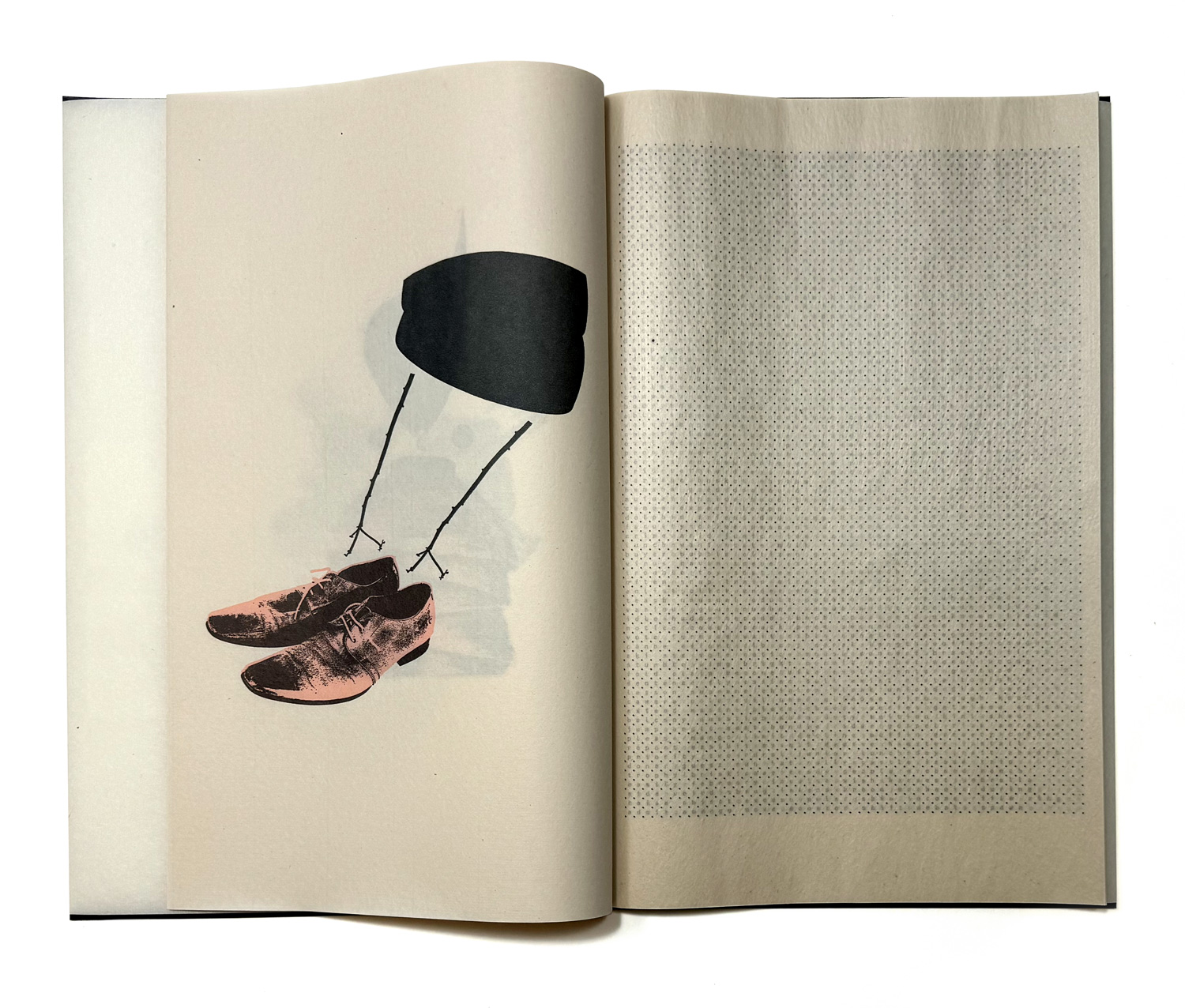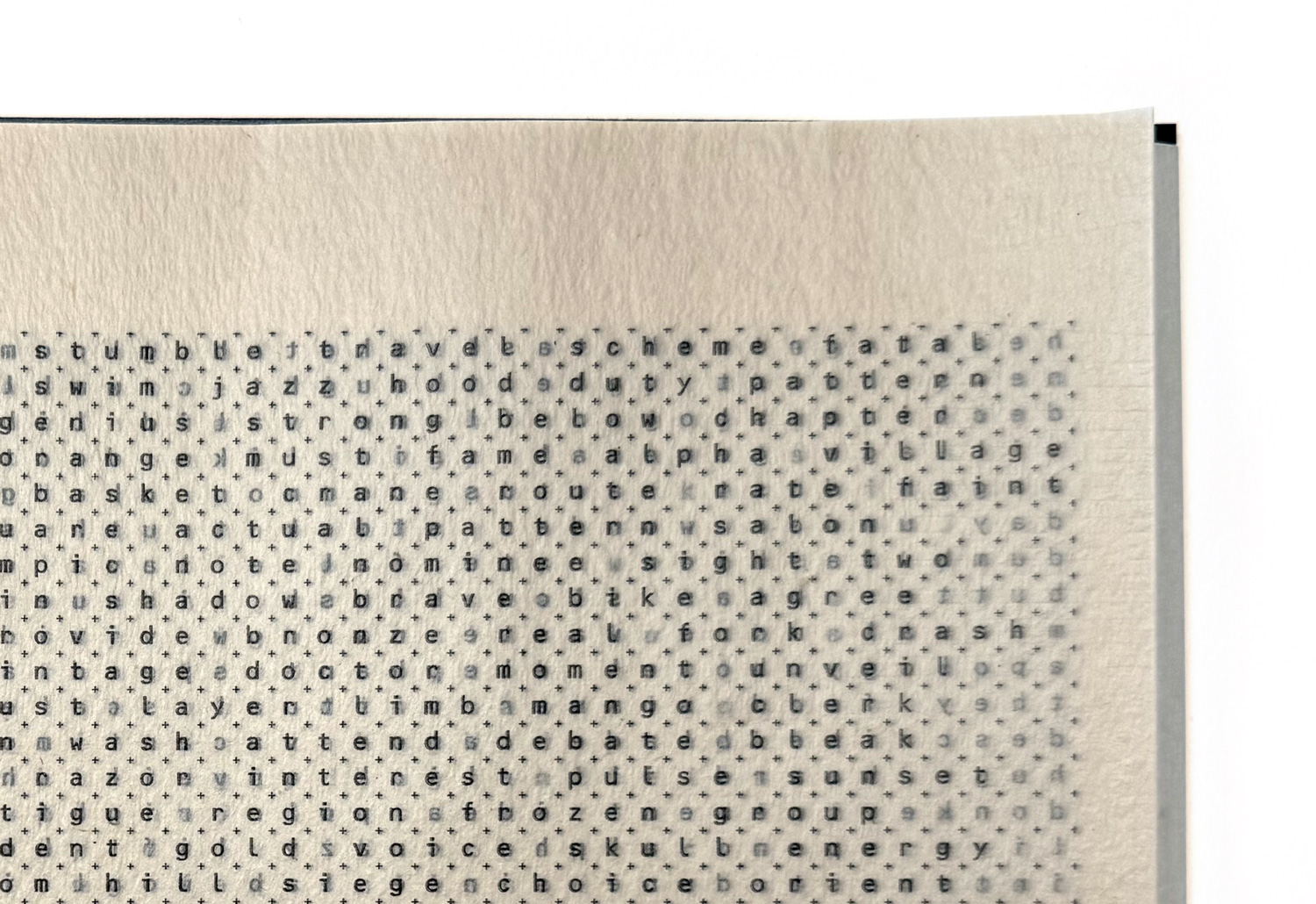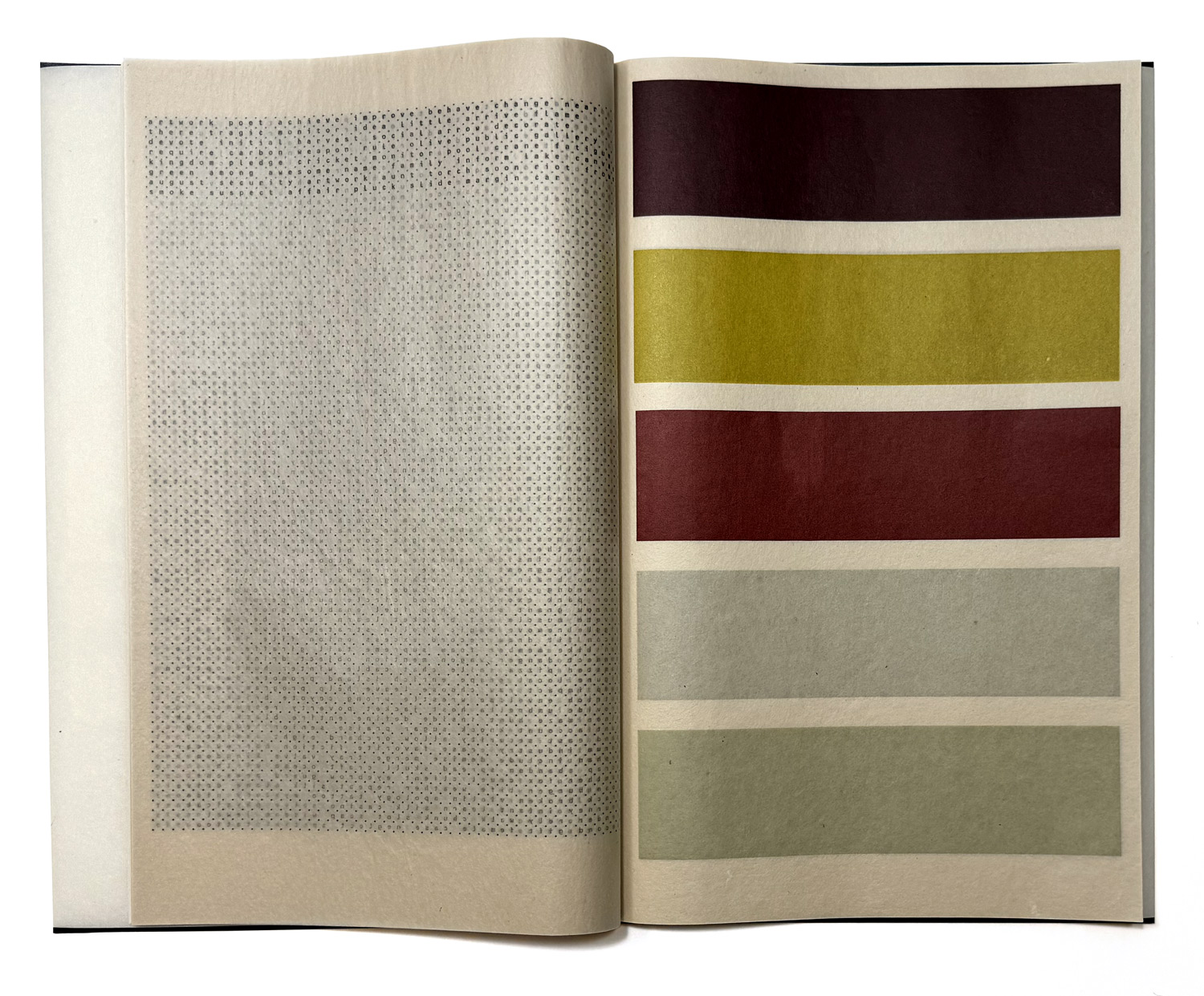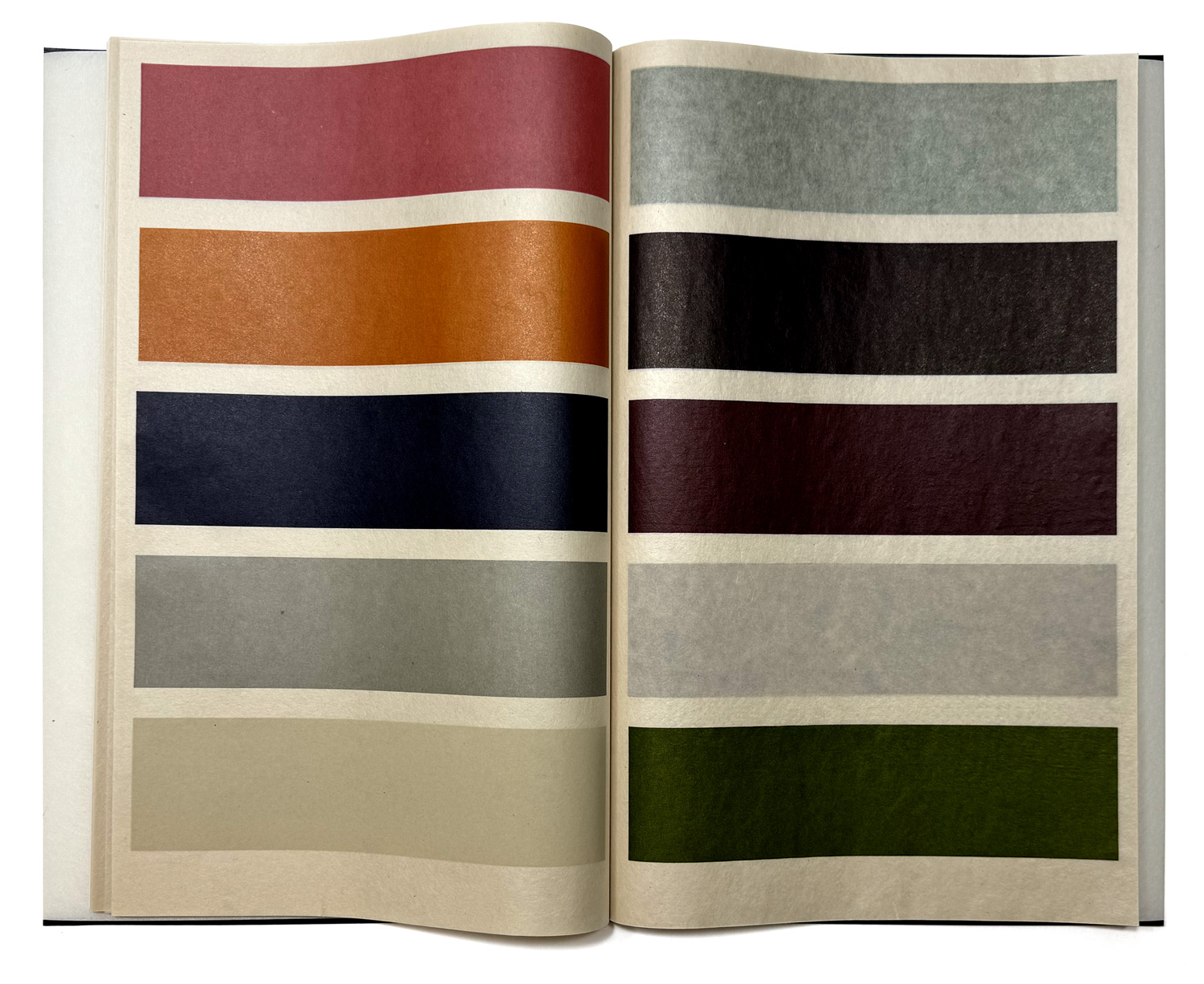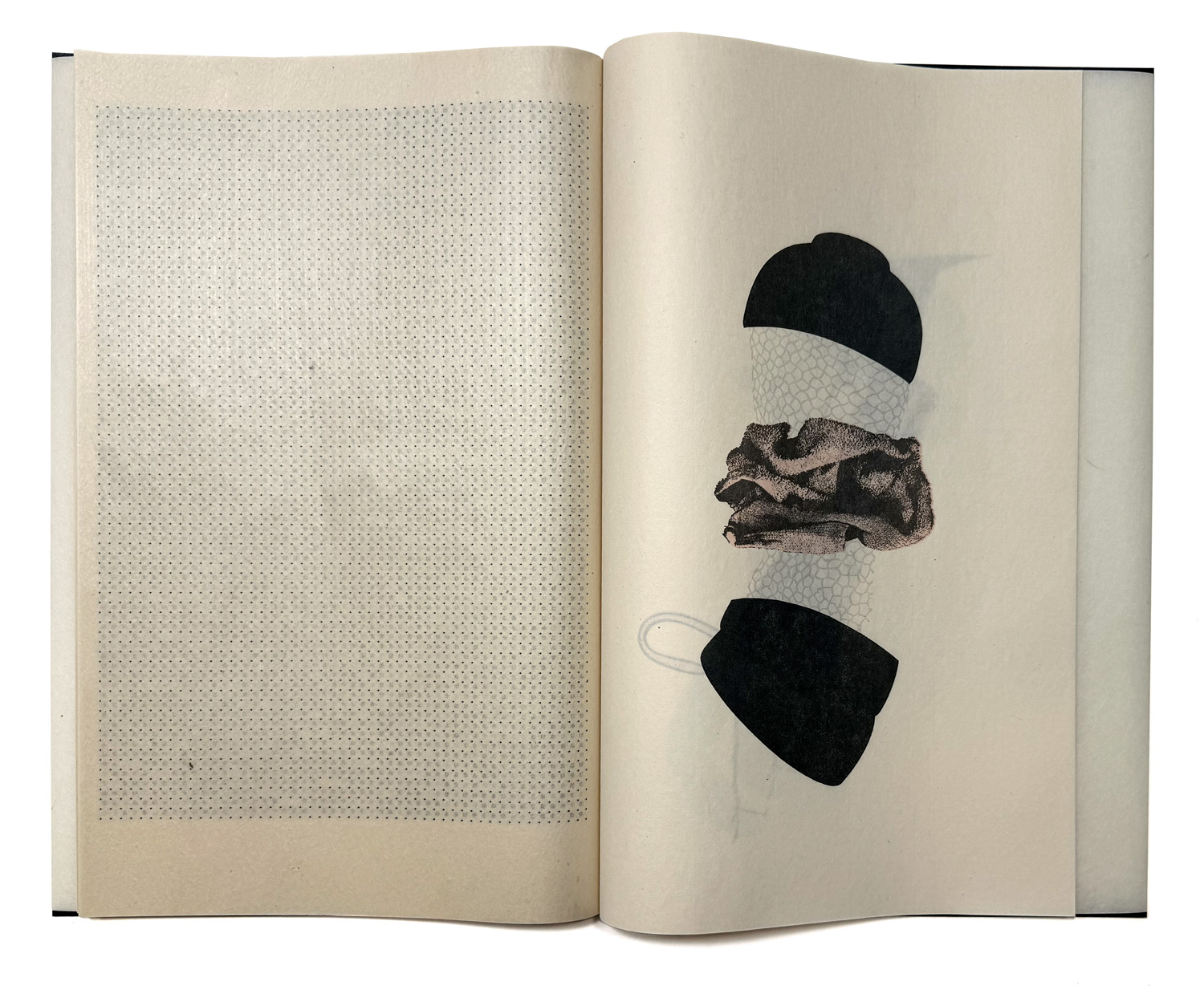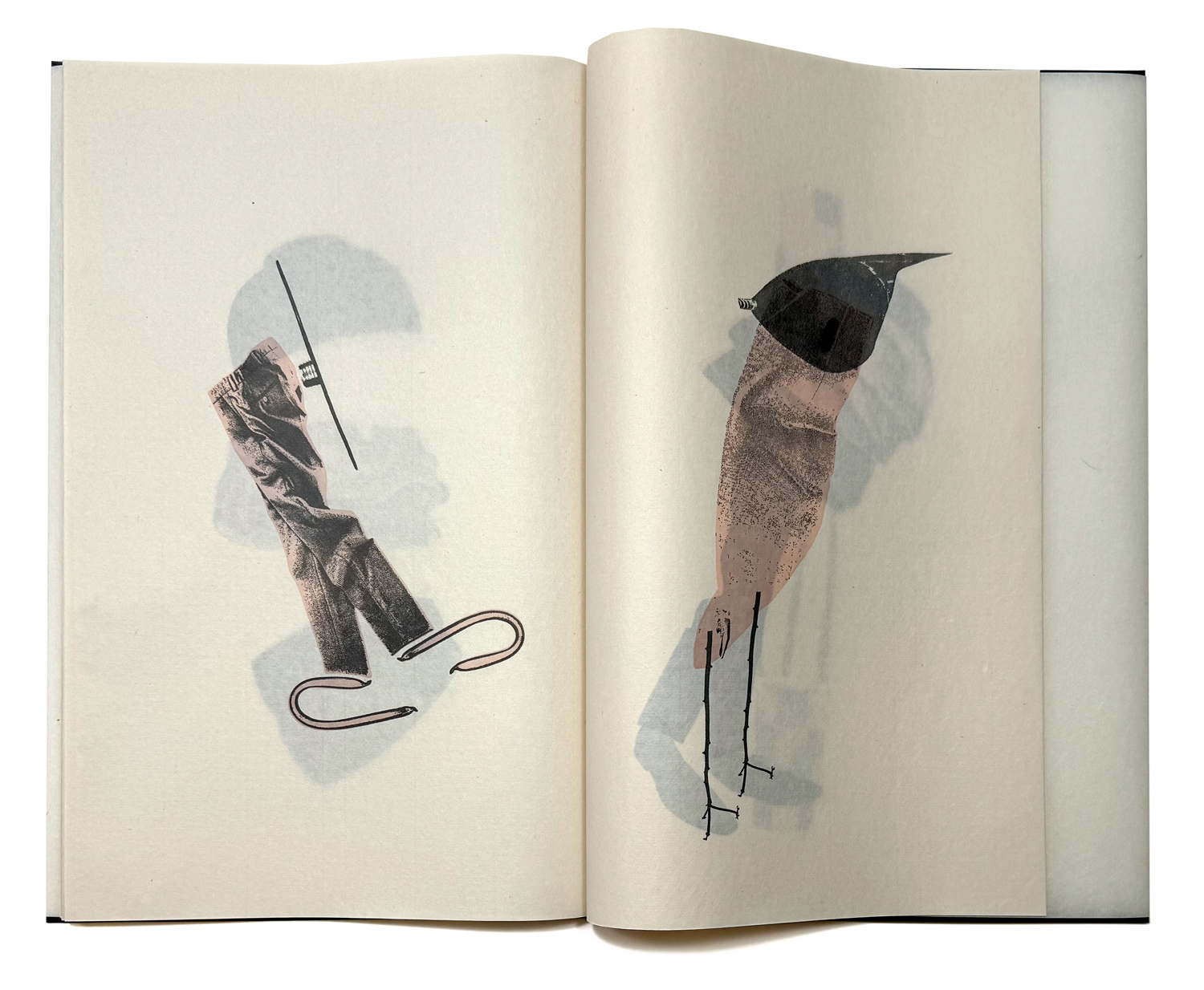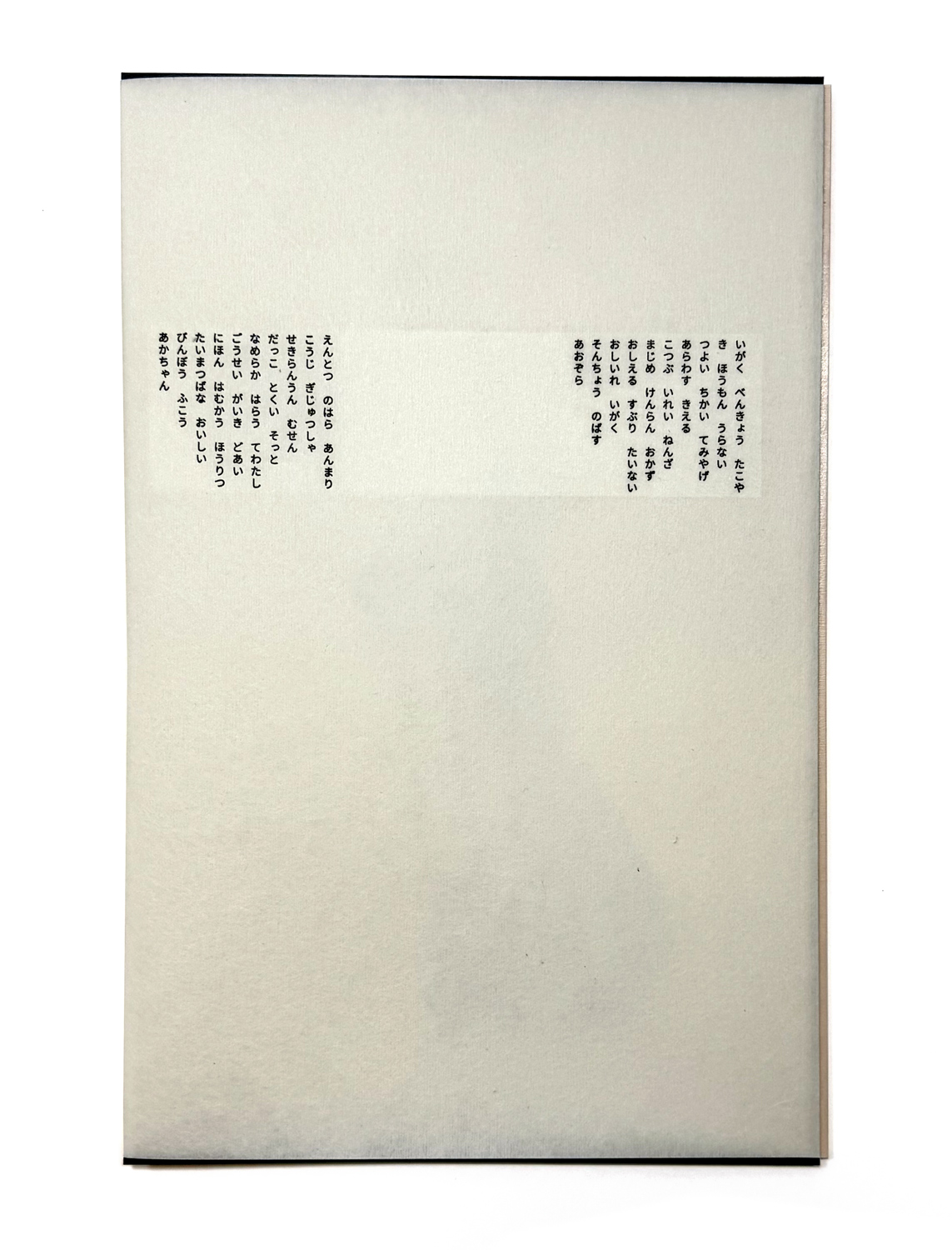2^11
2^11
Date
2024
Edition Size
25
Media
Embossing, Letterpress
Paper
bicchu-ganpi paper, Mitsumata, toshaban genshi
Binding
Hidden Japanese binding
Dimensions
13.7 × 8.6 in
Pages
52
Location
Karlsruhe, Germany
Enclosure
Slipcase
Collection
Limited Edition Artists Books$ 4,400.00
1 in stock
2^11
grain morning raccoon peace job barrel hamster nature exercise unable fire crush image patrol pony aerobic key pet ship squeeze bargain move again ability
“As with all my projects, the starting point for 2^11 was a literary text: a short Japanese story that I found so fascinating, more than ten years ago, that I wanted to have it translated into German so I could use it for an artist’s book. Unfortunately, when I asked for permission to print a small edition and make a German translation of the original text, I encountered a series of problems. At first, the publisher that had the rights to the original text stubbornly ignored every request and then ultimately refused, saying that it didn’t see the point of such a small-scale artistic publication. Next, the translator and I contacted the author’s heir ourselves, but despite multiple attempts, there was no response from her either. So, for the first and only time in my experience, I had to shelve a project that I had already started.
In the summer of 2022, I was organizing my archives and stumbled across the extensive preliminary work for the project, which I still found fascinating. It reawakened my ambition to find a way around the printing permission that was never granted. I made various attempts to use the text in a way that would produce a readable result without violating the copyright, and finally I decided to have it professionally encrypted. Jörn Müller-Quade, Professor of Cryptology at the Karlsruhe Institute of Technology, did this for me. The original Japanese text and its English translation went through a complicated process that, in cryptologist-speak, can be simplified(!) as follows:
1. Two passwords, created by two different people, are imported and suitably combined (at random). This creates a binary key.
2. The text is imported and is now a binary object in the computer memory.
3. The text is compressed. Since compression is inefficient for small input volumes, a comparison is made to see which is shorter: the compressed text (which in turn is also a binary object) or the (binary) uncompressed text. The shorter version is then further processed.
4. A separate password is derived for this plain text and then encrypted. The cipher text is binary.
5. The cipher text is divided into 11-bit blocks. In a Japanese or English list of 2048 = 2^11 entries, each number from 0-2047 is assigned a word. For each block, the 11-bit value is then interpreted as the number n, and the nth word in the dictionary is displayed. The list can be used to transcribe computer-generated coincidences as readable text.
The result is a long sequence of individual terms. They are printed in Monospace font in the book and bear no relation to one another. That makes them particularly appealing, as they bring up a series of associations and suggestions for the reader or viewer.
The same is true for the illustrations: ten collages of objects of varying size, all of which are described in the original text. They accurately represent, as far as possible, what I pictured while reading the text. The various objects were photographed by Blaffert/Wamhof, and I scaled them all to the same format regardless of their proportions—similar to the non-proportional Monospace font—before dismantling and collaging them. As with the encrypted text, individual elements can be identified; sometimes they also produce unusual and provocative combinations even though the original story is no longer visible.
The third section has to do with colors that are mentioned in the original text. Twenty hues are printed as individual stripes across four pages; here, too, they are the shades I imagined while reading the text. As with the objects, they represent my subjective response.
All three components—illustration, text, and color stripes—are printed on different Japanese papers, each in keeping with the different characters of the prints. The book is bound in a semi-transparent cover with encrypted embossed text for the author and title. It is protected by a semi-transparent sleeve showing parts of an interior view from a two-point perspective, drawn by Anja Grunwald. The sleeve is related to the story too: like the illustrations and colors, it is a very subjective association.
The encryption and deconstruction process is echoed by the puzzle slipcase: a three-part object held together by magnets that is intended to seem confusing when disassembled. Instead of the very long encrypted title, it is embossed with the number 2^11, which refers to the number of terms in the dictionary that I used to translate the encrypted binary code into individual words.
The book is intended to work as an independent project, separate from the original, and to inspire people to think about perception, terminology, and interpretation. The original text is merely a starting point from which something new has been created, and no longer plays any role in the book 2^11.”

